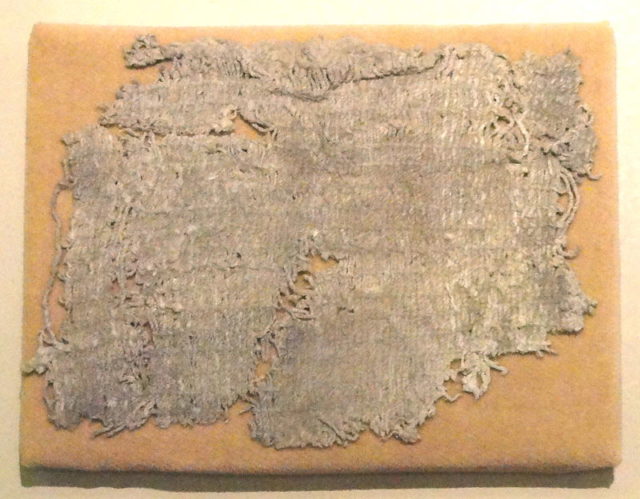Initially, researchers believed that indigo dyes were first used in Fifth Dynasty Egypt about 4,000 years ago, but an archaeological dig in Northern Peru in 2007 produced examples found to be 6,200 years old, making them the earliest known examples.
Historically, indigo dye originated from plants – mostly the Indigofera, a tropical plant. It produces an organic compound called indigoid. Asians used the Indigofera tinctoria, the real indigo plant, and there are 50 different types of the Indigofera species grown in India today. Persicaria tinctoria was used in the colder climates of Japan and Taiwan. Isatis tinctoria, also called woad, was used by Europeans.

Greeks and Romans from 300 B.C. to 400 A.D. imported indigo from India and believed it was a mineral. When Marco Polo returned from Asia in the late 1200s, he explained that indigo was not a mineral, but was rather a compound in plants. The Egyptians used mollusks and Murex sea snails to produce the blue coloring – the snails create a blend of indigo and red dibromo indigo. The Egyptians then exposed the blend to bright light when using the dye, which caused it to turn into mostly blue and purplish colors.
Most dyes were created by boiling flowers until the liquid turned the shade that was desired. Extracting indigo dye from plants was more complex than producing other colors because the leaves used had to be soaked in water, fermented, and then aerated to allow the solid particles to separate and sink to the bottom of the container. The solid particles could then be dried and stored as cakes or powder until ready for use. When the solid particles were brought out for use, an alkaline liquid was needed to bring them back to a liquid form. Stale urine or zinc was used to make white indigo, which when exposed to oxygen, caused the cotton first to turn yellow, then green, with the process complete when the threads turned blue.
Since 1897, the indigo color used in blue jeans is produced by a synthetic process. A petroleum-based colorant, invented by German chemist Adolf von Baeyerand, had by 1914 surpassed natural indigo in the dye market. In 2002, 17,000 tons of synthetic indigo were produced.
In an article from Science Advances, published September 14th by Jeffrey Splitstoser of George Washington University, researchers claimed that the Peruvian examples, found in the prehistoric ceremonial mound Huaca Prieta in the Chicama Valley near the Pacific Ocean coast, may have been ritual offerings. Junius B. Bird first excavated the mounds in 1947. The project was funded by Vanderbilt University, the National Geographic Society, and donations from the Lapinski and O’Leary families. Splitstoser found examples of textiles which used twining, a process of interlacing the threads of cloth together, to embroider designs of snakes, crabs, and mythological gods. The excavation also showed that the inhabitants not only harvested seafood from the ocean, but grew corn, fruit, beans, squash, peppers, and cotton. It is also believed that the Ancient Peruvians enjoyed popcorn.
Originally, the ancient cloth seemed colorless due to thousands of years of being buried. But after careful cleaning and investigation using liquid chromatography, which allows different parts of a fluid to be separated for study, it was discovered that five of the samples contained trace elements of indigo. Splitstoser claimed that sophisticated technologies used for creating indigo dyes appeared much earlier than originally thought.
Indigofera tinctoria, as well as woad, and other natural dye plants can be grown in home gardens today. In warm climates, it is a perennial, which is a plant that returns year after year, as long as no more than half of the leaves are harvested, leaving enough to sustain the plant. In colder climates, one can grow indigo as an annual plant, as long as seeds are started indoors at least six weeks before the last frost. As with most true perennials, it does not bloom until the second year, so it must be brought into the house and kept on a sunny windowsill or under artificial light over the winter.

Indigo requires high humidity and full sun. If kept indoors, it must be sprayed with water often and pruned to keep it a manageable size and promote good side growth. It takes a little over a pound of leaves to dye a half pound of wool, Tech Times reported.
Here is another story from us: Ancient Peruvian Burial Site Reveals Child Sacrifice
Different types of seeds, dye kits, and instructions, as well as information about pre-processed natural dyes, can be found at Wild Colours natural dyes, Studio 319, Scott House, Gibb St, Birmingham B9 4DT, UK or http://www.wildcolours.co.uk/index.html.
